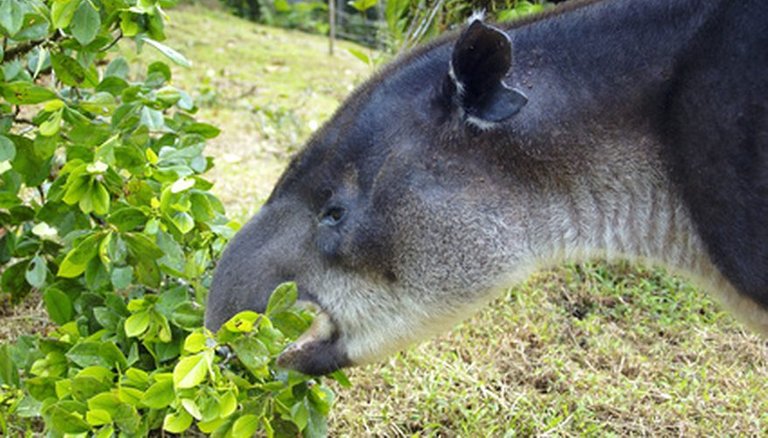
Tapirus is a genus of perissodactyl mammals of the Tapiridae family, commonly known as tapirs. It is the only current genus of the family, which includes nine other extinct genera. It belongs to the same order as the horses, with which they are distantly related, and the rhinoceroses, which are their closest living relatives.
In some places it receives names such as mboreví (word guaraní), anta, tapir, pinchaque and macho de monte. In December 2013, the discovery of a new species named Tapirus kabomani was announced.
They are medium-sized animals, with a length ranging from 1.3 m to 2.5 m, with a tail of 5 to 10 cm long, and a height on the cross of 70 cm to 1.2 m and a weight of 110 to 300 kg.

However, the main characteristic of the tapir is its elongated snout in the form of a small proboscis, which it uses mainly to pluck the leaves, herbs and roots that constitute its food. This horn is especially useful to collect aquatic plants in the swamps where usually spend a good part of the day. It also serves to drink water and, when they are males, to face their rivals in the mating season.

The body is compact and the head and neck robust, in order to better facilitate the passage through the dense tropical mating. The coat is usually very short and dark, although the offspring have brown fur with cryptic spots, similar to those of young jabatos, which fade with age.
These are very primitive animals, the first fossil representatives of the family are already in the Eocene Eurasia, about 55 million years ago, where you can see some features that were also present in the ancient ancestors (Hyracotherium) of their relatives current The feet have four fingers on the front legs and three on the hind legs.
Historia evolutiva
The genus was extended during the Miocene by Eurasia and North America, where it was on the verge of extinction in the Pliocene due to the gradual reduction of forest mass. Fortunately for the tapirs, South America joined North America 3 million years ago, giving them an escape route to the great jungles of the south. It is ironic that at present, 3 of the 4 surviving species are precisely American: this is the case of the northern, Central American or Baird tapir (Tapirus bairdii), that of the páramo (Tapirus pinchaque) and the sachavaca, Amazonian tapir , Brazilian or plains (Tapirus terrestris), which are distributed in various areas of Central and South America. The Amazon tapir is the most common; It covers almost the entire northern part of South America. The northern tapir, distributed from Tehuantepec to the coasts of Ecuador, also inhabited during the Pleistocene in northern Mexico and the southern United States (from California to Florida), where it became extinct about 10,000 years ago.
On the other hand, the tapirs of Eurasia underwent a strong reduction from the first half of the Pleistocene, disappearing from Europe and a large part of Asia due to the advance of the glaciations. At present, only one species survives, the Malay tapir (Tapirus indicus), reduced to a few areas of Sumatra and southern Indochina. Its original distribution was much wider, also covering the island of Java and reaching the north to Burma, India and even China, where it disappeared because of excessive hunting. This species is distinguished by the longer trunk than the American tapirs and because in adults the color of the mantle is black on the head, neck and legs, while the rest of the body is white.